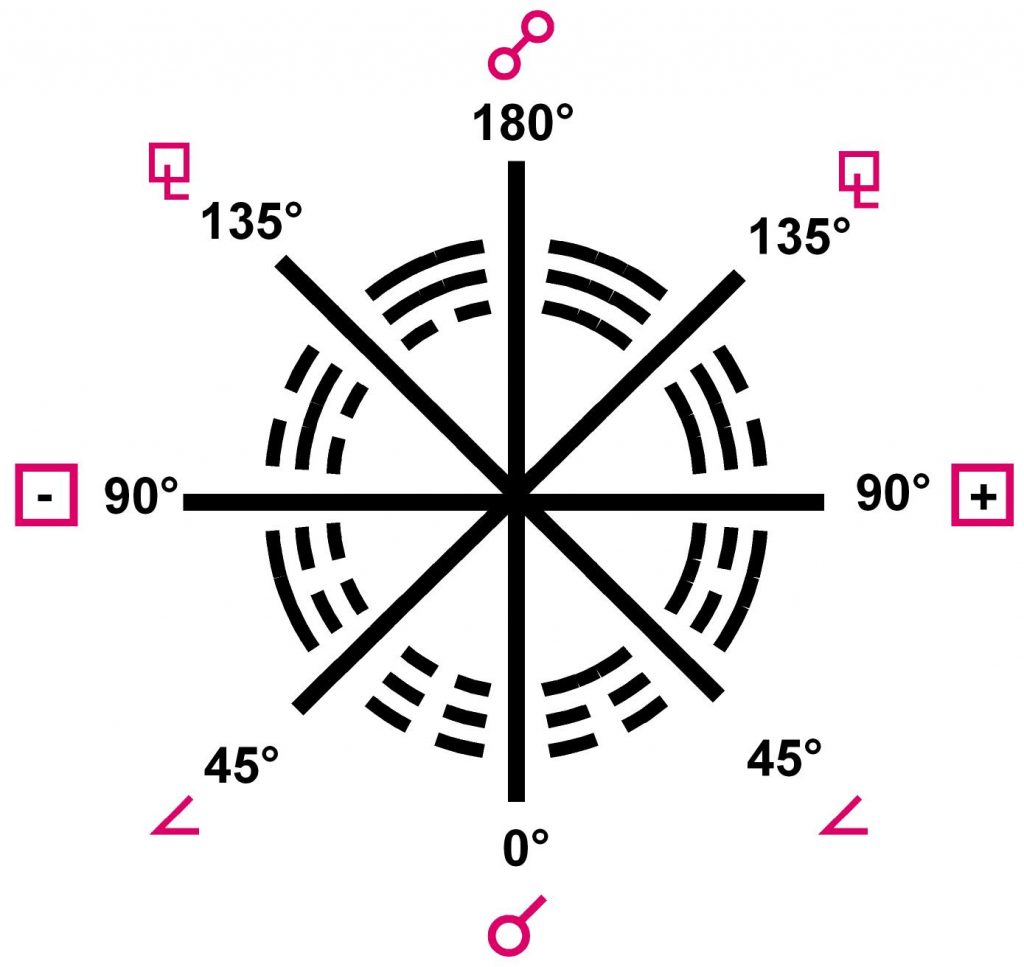Foundations of the Moon

For half of the moon cycle light increases, from the greatest darkness at the new moon to the greatest light at the full moon. The moon cycle represents the archetype or standard of aspect cycles for all the relationships between other planets and astrological points. The conjunction is the point where the two planets are in the same place in the sky. This is the time of the new moon when the sun and moon are in conjunction. It is the time of greatest darkness in the cycle. For the next 14 days or 180 degrees the moon moves away from the sun and waxes, or increases in brightness, reaching its peak at the opposition or Full moon, when the sun and moon oppose each other.
The Full Moon or opposition is the time of greatest brightness. From the opposition to the new moon, the moon wanes or decreases in brightness until it disappears into the sun’s light at the new moon. This is the darkest night of the year, where no moon is seen. The waxing half is the yang half of daylight increasing. The waning half is the yin half where darkness is increasing.

The conjunction represents the point in a cycle where two planets or the sun and moon come together in the sky. Because the two energies are in conjunction their energies combine and activity is started. This is the beginning of the cycle.
The opposition represents the point in a cycle or relationship where two planets or the sun and moon are opposed each other in opposite parts of the sky. Here the energies do not work together but stand in greatest distinction to each other. The opposition signifies an awareness of the distinctions between the two,
Here the activity peaks in the darkness and the awareness or understanding peaks in the greatest light, or at the point of greatest distinction.

The waxing half represents the phase of the repercussions of action. The waning half represents the phase of the repercussions of awareness.

The half of the cycle closest to the conjunction represents the hemisphere of Activity. The half of the circle closest to the opposition represents the hemisphere of Awareness.
Once the extremes (conjunction and opposition) are seen the midway points can be determined. The midway points in the cycle are the two squares at 90 degrees and 270 degrees from the conjunction. One square will be in the waxing hemisphere and the other square will be in the waning hemisphere.
This allows for a significant distinction between each of the squares. This is a factor not often taken into consideration in astrology.

Here we see the active half and the awareness half as well as the waxing and waning squares. The squares are the midpoints between activity and awareness.

The waxing square implies stress leading from activity to a greater awareness. The waning square represents stress leading from awareness to greater activity. Both activity and awareness have their repercussions.

Here we see the two layers within the same cycle. It creates four phases. The first is waxing and active. The second is waxing and aware. The third is waning and aware. The fourth is waning and active.
These clarify four modes of behaviour associated with each phase.

Here we see the four phases of the aspect cycle with the behavioural implications added to the four bigrams or two line figures.
Solid within and broken without represents the phase of extending action.
Solid within and solid without represents the phase of adjusting action.
Broken within and solid without represents the phase of extending awareness.
Broken without and broken within represents the phase of adjusting awareness.

In this diagram the four phases have divided and become eight phases of forty five degrees each. We can see here the correspondence to the eight trigrams. The innermost line signifies Waxing or Waning. The second or middle line represents activity or awareness. The third line represents the active (dark) and aware (light) halves of each or the eight sections.
The aspects are the exact degree divisions while the trigrams represent the phases between the aspects. Once again it can be seen that the trigrams of Fu Hsi Earlier Arrangement are the valid ones.

Each of the aspects here represent a type of stress, that is generated when changing from one phase to the next. On this diagram we see the eight aspects and the eight main divisions of the circle. We also see the eight corresponding trigrams in the appropriate sequence. On the outside are listed the implications of each of the eight aspects.

In this diagram of the moon phases we clearly see the increasing light and increasing darkness (decreasing light) phases. The aspects and the trigrams are in their proper positions. The degree of each aspect, the name of each moon phase and the direction of the cycle is presented. The greatest darkness of the new moon at the conjunction and the greatest brightness of the full moon at the opposition are the most obvious associations.
